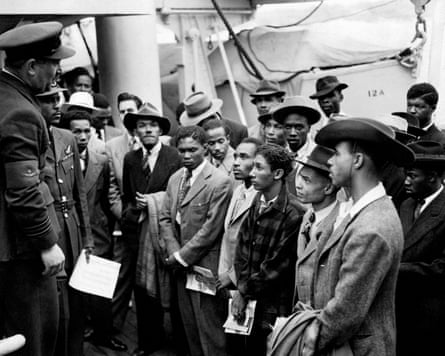This week I went to a Windrush Day reception in the gardens of 10 Downing Street. Standing in the brilliant sunshine, with a steelband tinkling away in the background, it was great to see this generation of Caribbean migrants finally being honoured as their bravery and enterprise deserves.
The excited guests – Windrush-era Caribbean migrants, their friends and family – were thrilled to be at No 10, and the absolute highlight was being addressed by the prime minister, Keir Starmer. Fortunately on this occasion, he refrained from telling his guests that they were turning Britain into an “island of strangers”. In any case, it would have been nonsense.
Nobody identified more strongly with Britain than that generation, many of whom had a picture of Queen Elizabeth II on their living-room wall. When the Empire Windrush arrived at Tilbury docks in Essex, its occupants did not see themselves as “immigrants”, but citizens of the United Kingdom and Commonwealth come to help rebuild the “mother country” after the war. Most of the passengers gave their last country of residence as the Caribbean, including Jamaica, Trinidad, St Lucia, Grenada and Barbados. Some had served in the British armed forces, but others had responded to the British government advertisements for workers.
While it is good to see the contribution of migrants to Britain in the postwar period commemorated, it is possible to get too sentimental about the Windrush era and forget the brutality of the racism they faced when they disembarked from those ships. They had been so very proud to come, but Britain’s reception was cooler than they might have expected.
One issue was employment. The Windrush era spanned from 1948 to the early 1970s, but the first Race Relations Act was not until 1965. So, in the early years of the Windrush era, employers could brazenly refuse to employ someone because they were black and not even pretend there was another reason. Accordingly, most Windrush migrants went into sectors hit by postwar labour shortages like transport or factory work.
Windrush-era women often went into the NHS. It was not an easy way to make a living. Nurses, in particular, were often on permanent nights or put into grades where there was plenty of backbreaking work but no promotion. Instead, they had to train younger white nurses and watch them climb the ladder. Despite all that, they were hugely proud of their jobs. Some people nowadays like to talk about the pressure immigrants put on the public services. But my mother’s generation helped to build the NHS.

Another problem was housing. Windrush-era migrants owned their own homes to an extent that might seem remarkable now. But it was not because they earned a lot of money. They had little choice. Before the 1965 Race Relations Act, many councils simply would not let to black people. The private sector was even worse. A notorious slum landlord of the time was Peter Rachman, who would charge double or treble the normal rent. He specialised in Caribbean tenants because they could get so few mainstream landlords to rent to them.
My father, like very many Caribbean migrants of the time, bought a house in what was then a shabby part of west London. He accumulated the deposit using an intra-community saving scheme called “pardner”. But he paid the mortgage by having a tenant or a family in every room. We ourselves were in one room in that house with a cooker on the landing. When my father bought his house, there was an Irish family, headed by “Uncle Jimmy”, as sitting tenants in the basement. I don’t think Uncle Jimmy had encountered a black baby before. When I was born, he promptly fell in love. Every morning, my mother would give me breakfast. Then she would take me down to Uncle Jimmy and he would give me another breakfast.
In the Windrush era, black people were often the victims of violence by bad actors such as teddy boys or fascist organisations such as the BNP. There was a backdrop of fear. The Notting Hill race riots were the culmination of years of teddy boys attacking black people. My mother used to tell a story about teddy boys storming down our west London road. They knocked on every door and if they found a black family inside, they beat them up. My parents waited petrified as the noise of the teddy boys grew nearer. Then out from our basement emerged Uncle Jimmy. He said very firmly “they are not getting our Diane” and when the teddy boys knocked on our door, he opened it. Seeing a white man, they assumed a white family lived inside and moved on to the next house.
No one should ever underestimate the courage of the Windrush generation. Travelling from the Caribbean countryside to one of the biggest cities in the world in order to build a new life was an act of extraordinary daring. Nor could my parents, and that whole wave of Caribbean migrants who came here in the 1950s on the Empire Windrush and all the other ships, have ever guessed that their achievements would one day be celebrated with so many splendid events. Including a reception in the garden of 10 Downing Street.
-
Diane Abbott has been the Labour MP for Hackney North and Stoke Newington since 1987
-
Do you have an opinion on the issues raised in this article? If you would like to submit a response of up to 300 words by email to be considered for publication in our letters section, please click here.

 2 months ago
109
2 months ago
109

















































